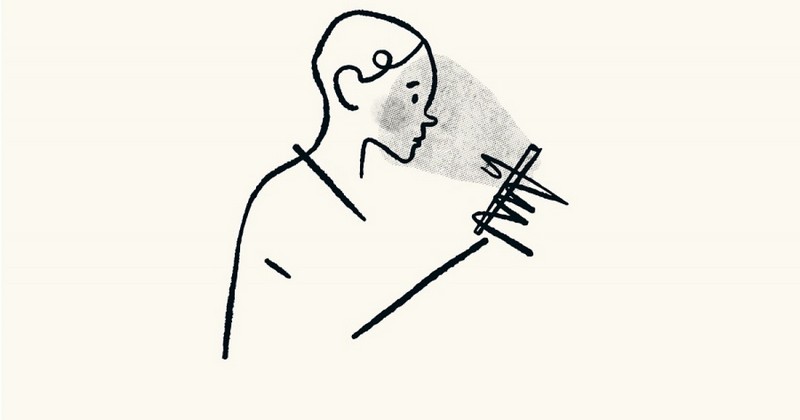Systematic desensitization, a valuable remedy for phobias

This type of psychological intervention is widely used to help people suffering from phobias.
Phobias are one of the most frequent and widespread psychological disorders among the Western population, and it is estimated that they affect approximately 10% to 15% of the population.
Fortunately, psychology has developed methods and techniques to overcome this type of problem, and in fact, it is one of the psychopathological disorders that respond best to treatment.
In this article we will see one of these forms of intervention used against phobias: systematic desensitization.. But, in the first place, let us see what the anxiety disorder of which we have begun speaking consists of.
What is a phobia?
Phobias are a set of psychological disturbances belonging to the category of anxiety disorders.. They are characterized because people who develop them suffer a pattern of sudden elevations in the level of anxiety when exposed to certain situations; as a consequence, they normally try to avoid these situations before they occur, or flee or withdraw quickly once the increase in anxiety has been generated, in order to stop feeling bad as soon as possible.
On the other hand, phobias are as varied as the number of situations or stimuli capable of triggering phobic reactions, and it is for this reason that we speak of phobias as the most common phobias.This is why we speak of phobia to needles, phobia to drive, phobia to spiders, etc. However, whoever develops a phobia, normally only suffers phobic anxiety reactions to a specific type of objects, living beings, places or situations. For example, Blood phobia does not imply a fear of dogs, airplanes, etc.
The main symptoms that appear in a phobic crisis are the following:
-
Increased heart rate
-
Nausea
-
Cold sweats
-
Tremors
-
Feeling of dizziness
-
Catastrophic thoughts about what will happen
-
Digestion problems
-
What is systematic desensitization applied to phobias?
Systematic desensitization is a form of psychological intervention belonging to behavioral therapies and, by extension, to cognitive-behavioral therapy. and by extension to cognitive-behavioral therapy, and is widely used especially to treat certain anxiety disorders, such as phobias.
The basic idea is to help patients to confront the situations they fear because of the phobia, not to eliminate the anxiety reaction, but to dominate it and to facilitate its progressive extinction.
For it, what is done is begin to expose the person to situations very similar to those that generalize the phobic reactionIn a controlled environment and following the guidelines given by the psychologist, making the person not to give in and flee from that kind of exposures.
This is achieved among other things by following a difficulty curve, starting with not very intense experiences and then making them more and more anxiogenic. To achieve this, we usually work with guided imagery exercises, images, and sometimes 3D virtual reality resources or real stimuli, when necessary and possible.
On the other hand, a further feature of systematic desensitization is that while exposing the patient to "uncomfortable" situations that trigger at least in part a phobic reaction, the patient is helped to induce a state of relaxation in himself/herself, is helped to induce a state of relaxation in himself/herself through various psychological techniques.through various psychological techniques. In this way, the experience that used to be associated with anxiety (spiders, needles, etc.) becomes associated with the opposite psychological and physiological processes.
Thus, the purpose of systematic desensitization applied to phobias is to allow the person to normalize the fact of experiencing the proximity of those objects, living beings, places or situations that he/she has been fearing, contributing to stop giving them so much importance. It is a process of authentic emotional training and totally experiential.This cannot be replaced simply by theoretical learning about what a phobia is: usually, people know that the fear they feel in phobic crises is irrational, but nevertheless, it limits their lives.
Are you looking for psychological support?
If you suffer from a phobic problem or any other psychological disorder associated with anxiety or the management of emotions in general, I invite you to get psychological support, I invite you to get in contact with me to start a process of psychological intervention in several sessions. I am a psychologist specialized in the cognitive-behavioral approach, and I work both face-to-face in Madrid and online via video call. To see more information about how I work, as well as my contact details, access this page.
Bibliographical references:- Bourne, E.J. (2005). The Anxiety & Phobia Workbook. Oakland: New Harbinger Publications.
- Caballo, V.E. (1998). Manual de técnicas de terapia y modificación de conducta. Tres Cantos: Siglo XXI.
- Dubord, G. (2011). Part 12. Systematic desensitization. Canadian Family Physician, 57(11): 1299.
- Kessler et al., (2005). Prevalence, Severity, and Comorbidity of 12-Month DSM-IV Disorders in the National Comorbidity Survey Replication. Archive of General Psychiatry, Vol. 20.
- McGlynn, F.;Smitherman, T.; Gothard, K. (2004). Comment on the Status of Systematic Desensitization. Behavior Modification, 28(2), pp: 194 - 205.
- Wolpe, J. (1958). Psychotherapy by reciprocal inhibition. Stanford: Stanford University Press.
(Updated at Apr 12 / 2024)